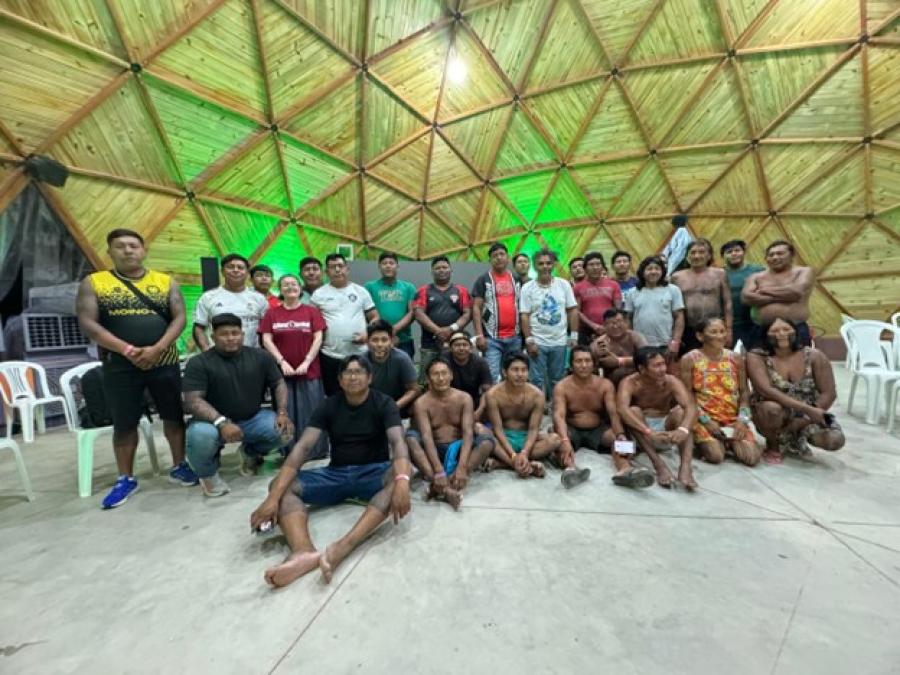Brazil — Here at the great bend of the mighty Xingu River, the Brazilian government is pushing to construct a dam that could end up being the world's second largest, generating huge amounts of hydroelectric power. But the main beneficiaries of the project are not likely to be the Indian tribes or other local residents, but instead a government halfway across the world, in China.
To satisfy the appetite of a rapidly growing industrial base, state-owned Chinese companies have begun involving themselves in mining projects in the eastern Amazon, ranging from aluminum and steel to nickel and copper. Processing each of those materials requires large amounts of electricity, and the government of Luiz Inácio Lula da Silva, intent on forming what he calls "a strategic alliance" with China, is eager to perform that task.
Meanwhile, the river dwellers whose lives will be disrupted by the dam predict that it will cause extensive environmental damage and encourage an influx of poor settlers seeking jobs that will not exist. They also complain that they will not receive the power they have long been demanding of the government and will be forced to move.
"If this thing is built, then Lord help us," said José Carlos Arara, a leader of an Indian settlement perched above the river. "The Chinese are way over there. But we are right here, at the gateway of the dam, without water, medical care or electricity, and rather than help us, our government wants to make things worse. If it were up to us, this dam would never be constructed."
Officials in Brasília, however, promise that the project, named Belo Monte after the site where it is to be built, will control the flow of the river so as to minimize its impact on the nine tribal groups that live here. They also say that because Brazil cannot afford not to build the dam, they will pay whatever price is necessary to placate the skeptics here.
"This is an important public works for a country like ours, which needs to take better advantage of its energy potential," Márcio Zimmerman, director of planning and development for the Ministry of Mines and Energy, said by telephone. "The north is a region that is in the process of industrialization and development, and hydroelectric power is a long-term source of energy that is cheap and renewable."
In its original form, the Belo Monte project dates to the 1970s, when it was presented as a solution to predicted energy shortages in the southern, industrialized part of Brazil. But environmental, human rights and indigenous groups opposed the plan from the start, in part because of its huge eventual costs, in the billions of dollars. The groups fought it in the courts and in Congress, and by the time the previous government left office in 2002, a court ruling appeared to have shelved Belo Monte for good.
But da Silva and his leftist Workers' Party came to power promising a battery of social initiatives, including a "Light for Everyone" program meant to bring electricity to poor and remote rural areas like this. Sensing an opportunity, proponents of Belo Monte dusted off the project and persuaded da Silva to make it a priority.
"There was dereliction in not building hydroelectric projects" in the previous government, da Silva said recently. "With the projects that are under way, we can permanently guarantee" supplies of energy to consumers "for five, six or even 10 years down the line."
But in partnership with China, Brazil is also committed to large industrial projects in the Amazon that will consume huge amounts of electricity and employ relatively few people. Among them are a pair of large plants that will process bauxite, the raw material used to make aluminum, near Belém, the capital of Pará State in the eastern Amazon.
A Chinese company is planning to build a steel mill in São Luís, at the eastern edge of the Amazon, as part of a venture with a Brazilian company. In a separate project, a Brazilian company is already building another steel mill near Belém to meet the demand that is anticipated from the Chinese and American markets.
The iron ore for those projects comes from Carajás, south of here, which has the world's largest reserves. Copper to supply China and other markets is being extracted from the area, and building a copper smelter nearby is being discussed.
"Everything in the Amazon that is electricity-intensive has a big Chinese component and is getting strong official support, even though the main beneficiary will clearly be China, rather than Brazil," said Lúcio Flávio Pinto, who wrote the book "Hydroelectric Projects in the Amazon." "Not only are the Chinese going to be investing a minimal amount themselves, but they will also be shifting the resulting pollution problems to the Amazon."
Da Silva's government, mired in a corruption scandal that threatens his chances of being re-elected next year, is so eager to move ahead on the dam that in July it persuaded Congress to authorize the project, ignoring a requirement to confer with the communities that would be affected. Opponents are challenging that action in the courts.
"Even though the Brazilian Constitution says that we are supposed to be consulted, no one came to talk with us," said Manuel Juruna, the leader of the main community here. "
In Brazil's industrialized south, little mention has been made of the dam's connection to da Silva's broader strategy of strengthening economic and political ties with China. That policy is coming under increasing criticism, especially in São Paulo, the country's business capital, on the grounds that Brazil's national interests are being sacrificed.
By Larry Rohter, Published: Sunday, November 20, 2005
Source: New York Times



